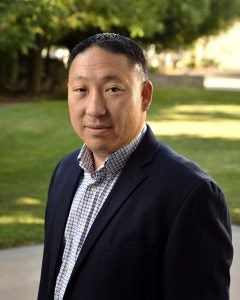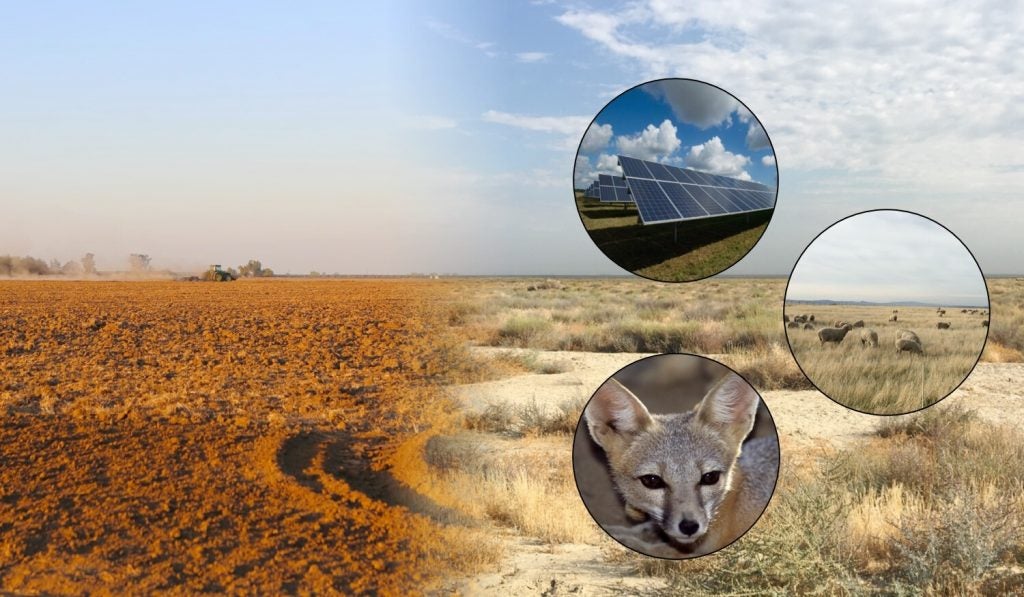
Aaron Fukuda is general manager of the Tulare Irrigation District, general manager of the Mid-Kaweah Groundwater Sustainability Agency and a participant in the Kaweah Regional Conservation Investment Strategy steering committee process.
Growing up in Hanford, California, Aaron Fukuda learned about the connections between water, animals and plants at an early age. His mother, a biologist, taught him how to study owl pellets and how rain changed the landscape when he was a kid.
As an adult, Fukuda is more focused on what’s happening both on the ground and underground with the region’s increasingly scarce water supplies.
Fukuda wears three hats that give him a unique perspective on the region’s water and land issues as general manager of the Tulare Irrigation District, general manager of the Mid-Kaweah Groundwater Sustainability Agency and a participant in the Kaweah Regional Conservation Investment Strategy (RCIS) steering committee process.
I first met Fukuda last year while working on the RCIS — an effort to find ways to improve natural landscapes while helping to balance groundwater use in compliance with California’s Sustainable Groundwater Management Act (SGMA). This RCIS, funded through a state program, also will open the door to new funding to reimburse growers for repurposing some farmland into wildlife habitat that would require little to no water to support.
I spoke to Fukuda about the challenges facing the Kaweah Subbasin, which covers portions of Tulare and Kings counties, and how the RCIS can help.
How is the Kaweah Subbasin being affected by drought and SGMA?
The three Kaweah Groundwater Sustainability Agencies submitted plans to the state in 2020 and estimated the groundwater overdraft to be 80,000 acre-feet per year — about how much it takes to irrigate 20,000 acres of almonds.
Since then, we’ve experienced back-to-back drought years, which has exacerbated the rate of overdraft. We originally intended to take five years to solidify our management data before restricting groundwater use. But with the last two dry years, the groundwater agencies have recognized we don’t have five years to get our numbers right — we need to start taking action within the next 12 months.
What kind of action?
There are two ways to solve groundwater overdraft: supply-side solutions that bring in more water to replenish groundwater and demand-side solutions that reduce irrigation demand. What’s likely going to happen is accelerated movement toward demand reduction, such as land retirement or land repurposing, while we continue to work on supply-side projects.
We’re trying to maintain as much farmland as we can to support resilient and vibrant agricultural communities. Our biggest worry is that for every acre we take out, there is a trickle-down effect with more economic damage hitting disadvantaged communities within our region.

A Regional Conservation Investment Strategy (RCIS) is a science-based, nonbinding, voluntary conservation strategy approved by the state that identifies at-risk natural resources and species, as well as potential actions to protect them. The Kaweah RCIS is focused on supporting working lands, native habitat and creating options for landowners who need to manage their groundwater use.
How do you see the RCIS helping the Kaweah Subbasin achieve groundwater goals?
I think it is a really a good exercise in trying to find where programs can come together. The RCIS wants to promote, fund and incentivize habitat creation, and groundwater managers and users are trying to comply with SGMA. With the Kaweah RCIS, we’re trying to combine these goals to achieve groundwater sustainability by 2040.
One outcome of SGMA is that some landowners won’t have enough water to grow a crop. That reduces land values significantly. You can let land dry up and become an air quality and invasive species nightmare that then generates problems for your neighbors, or, with the RCIS, you can turn it into habitat and receive funding to manage and maintain that habitat so it’s not an eyesore or pest management issue. Questions still remain as to how this will be done, and the RCIS is taking up these difficult issues.
What are your concerns about the RCIS moving forward? What makes you hopeful?
Local policymakers have some fears. It’s a new program. It’s a new partnership with state agencies that we typically don’t work with, so there is some trepidation.
It’s important to build trust with little steps. The best way to give folks comfort is to acknowledge the issues and keep them front of mind as you move the program into implementation, maintaining flexibility so policymakers have the ability to adapt. It is also critical that programs have the ability to flexibly adapt to unintended consequences and allow the local agencies to respond appropriately.
I’m a firm believer that the stakeholder process is critical to making sure there is consensus — unanimous consensus. If one group is not happy, their issues will continue to arise down the line.
The RCIS makes me hopeful because repurposing land for the environment via financial incentives is a win for nature, a win for agriculture and a win for the local community.









